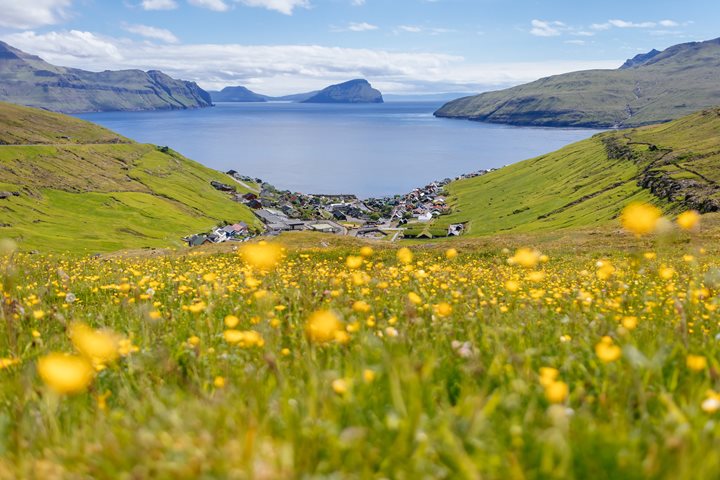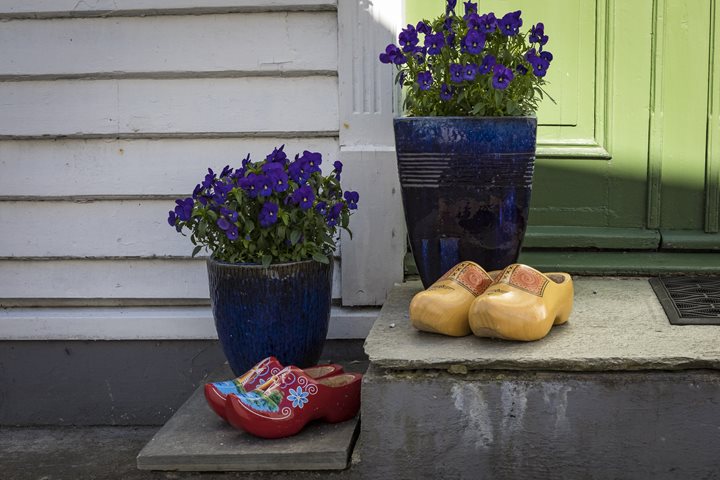Today we visited Ertholmene, and archipelago in the middle of the Baltic. By Zodiac, we passed the first of these, Graesholm, which is now a bird sanctuary. Gulls and cormorants circled the island, but we were surprised to see large swans, as well as the bobbing heads of a few grey seals. We landed on Christianso, the largest, linked by bridge to Frederikso, and, breaking into groups, went to explore.
Christianso became an important place when fortifications were built beginning in the late 1600s. These were finally tested during the Napoleonic War, when Britain tried to take what had become a significant base for privateers. The fortifications cover the island, and many of us walked its ramparts as one would the walls of many an ancient town. Houses now stud the island, typically mustard-colored, with red-tile roofs. Most include charming little gardens, with flowers, apple trees, or vegetable plots all competing for space. Jutting bedrock or fortifications added a bit of rough-and-tumble to the gentle environs. Trails thread among the houses, leading through forest groves or stark stony seaside clearings. Photographers had an easy task here, as nearly every turn revealed another fine vista or rustic scene. Nature walkers saw more seabirds, combed the trees for songbirds, and found a few fat frogs. All the while, the sun was warm and the breeze was cool, enhancing what was already a thoroughly pleasant experience!
We spent the afternoon at sea, and heard our ship’s archaeologist, Vinnie Butler, speak about trade in the Baltic. Starting with Vikings and following into the Hanseatic League, he described life in the past and the various products that were traded in this region. This was a fine preparation for our next day’s visit to Visby.









